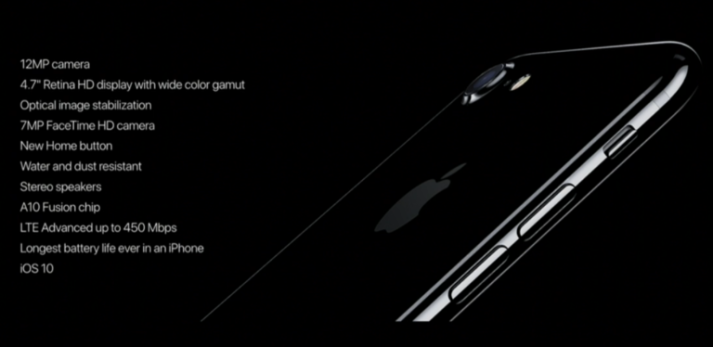
Cognitive dissonance which is known as discomfort or disruption, occurs when a customer carries contradicting thoughts about a belief or an attitude object (Schiffman et al. 2014, pp. 268). There are three ways of reducing this dissonance: removing irregular cognitions, adding harmonious cognitions, or reducing the importance of the dissonant cognitions (Telci, Maden and Kantur, 2011).
I experienced cognitive dissonance when I was seeking to replace my old phone with a new one. Having a positive attitude towards the ‘iPhone’ as a result of direct experience with the product and positive word-of-mouth (Shciffman et al. 2014), I was tempted to pre-order the recently released ‘iPhone 7’. Based on the fact that similar products such as ‘Samsung’ and ‘Google’ have different functional performance attributes offered at a lower price, My post-purchase dissonance was triggered (Telci, Maden and Kantur, 2011).
Reducing/avoiding post-purchase dissonance from a buyer’s perspective(myself):
The level of involvement with a product influences post-purchase evaluations. High expectations prior to purchase lead to more favorable evaluations after the decision have been made in the case of a high involvement product (Telci, Maden and Kantur, 2011). Even though the purchase of an ‘iPhone 7’ is accompanied by high expectations, as a reason of the high quality and reliability offered by Apple. I made sure not to get carried away by high expectations.
As mentioned before cognitive dissonance is not only related to the importance of a certain product, but it is also heavily linked to the functional performance attributes offered by substitute products (Telci, Maden and Kantur, 2011). Thus, the wise thing to do was to conduct an extensive research and evaluate all other smart phones offered in the market, by comparing and contrasting there performance, features, quality, and reliability. Then based on the outcome of the research one should choose the best alternative.
Other strategies that I have used in order to reduce the dissonance at the time of pre-ordering the ‘iPhone 7’ were; looking to known satisfied owners of an iPhone such as family members and friends for reassurance and I also managed to act a sales agent, by selling friends and family members on the positive features of the ‘iPhone 7’ (Shciffman et al. 2014).
Reducing post-purchase dissonance from a marketer’s perspective:
Studies have shown that there are three cognitive dissonance consumer segments: High-dissonance segment, a low dissonance segment, and a concern about needing the purchase segment (Shciffman et al. 2014). So for marketers to successfully reduce post-purchase dissonance, they should know under which segment the target customer falls (Telci, Maden and Kantur, 2011). The target market of apple is usually a young and knowledgeable segment, which is found to be more likely to experience high levels of cognitive dissonance, as a reason of their high involvement and expectations (Telci, Maden and Kantur, 2011). There are many ways to counter cognitive dissonance, however the most effective strategy implemented by marketers is to change attitudes (UKessays, 2017). An effective strategy for changing customers attitudes towards a product or brand is to make particular needs prominent, by using a functional approach and relying on the knowledge function in Apple’s case (Shciffman et al. 2014).

One of the most ‘iPhone 7’ advertisements which had an effect on reducing my cognitive dissonance, was an advertisement which highlighted on all the features of the ‘iPhone 7’. The advertisement made me aware that the ‘iPhone 7’ is water and dust proof, which is something significant to me since all my previous phones were damaged from a water leak. Moreover, the advertisement highlighted on other special features, such as the quality of the camera and a more durable home button. At this point I was convinced that my decision to purchase an ‘iPhone 7’ out of all the other alternatives is the right and most convenient choice.
Reference list:
Schiffman, L., O’Cass, A., Paladino, A. and Carlson, J. (2014). Consumer Behaviour. 6th ed. Pearson Australia Group, Frenchs Forest NSW.
Telci, E., Maden, C. and Kantur, D. (2011). The theory of cognitive dissonance: A marketing and management perspective. Procedia – Social and Behavioral Sciences, 24, pp.378-386.
UKEssays. (2017). Cognitive dissonance theory and attitude changes. [online] Available at: https://www.ukessays.com/essays/psychology/cognitive-dissonance-theory-and-attitude-changes-psychology-essay.php [Accessed 2 May 2017].